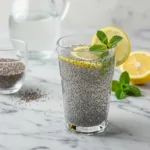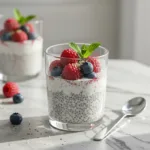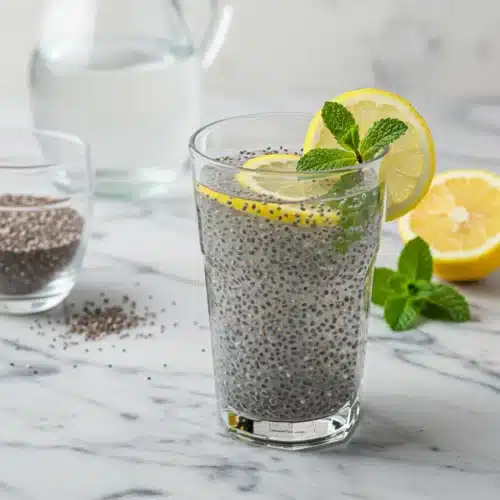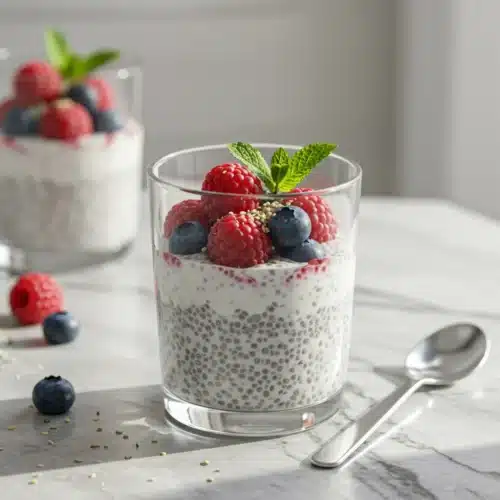Recipe Overview
Welcome! If you’re searching for the best lemon balm tea recipe, you’ve come to the right place. This simple, soothing herbal tea is not only a delight to the senses but can also be a powerful ally in your wellness journey. Whether you want to unwind after a long day or are looking for a natural way to support your health goals, this tea is for you. Many are discovering that a gentle, natural approach can be incredibly effective, and this lemon balm tea recipe for weight loss is a perfect example.
This guide will walk you through everything you need to know, from the incredible benefits of lemon balm to brewing the perfect cup every single time. Get ready to embrace a simple ritual that tastes amazing and makes you feel even better.
What Exactly Is Lemon Balm?
Lemon balm (Melissa officinalis) is a perennial herb belonging to the mint family. It’s famous for its beautiful, heart-shaped leaves and a fragrant lemon-mint aroma that is truly refreshing. For centuries, this gentle herb has been cultivated in gardens worldwide and cherished for its calming properties and culinary uses. You can easily grow it in a pot on your patio or find dried lemon balm in stores, making it accessible for everyone.
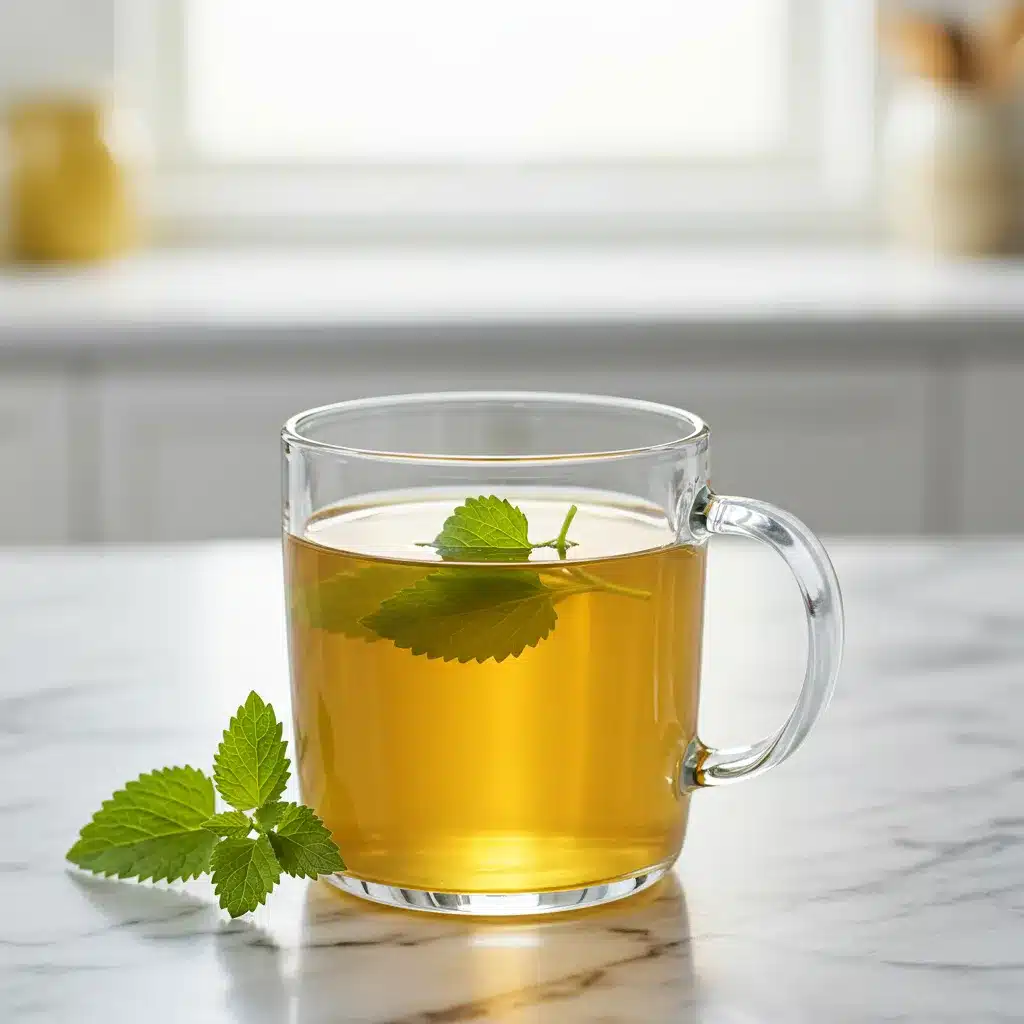
Lemon Balm Tea Recipe for Weight Loss
Method
- If using fresh lemon balm, give the leaves a gentle rinse under cool water. You can lightly crush the leaves with your hands to help release their natural oils.
- In a small pot or kettle, bring 4 cups of water to a boil.
- Place your fresh or dried lemon balm leaves into a teapot. Pour the boiling water over the leaves. Give it a gentle stir, cover the pot, and let it steep for 10-15 minutes.
- Strain the tea through a fine-mesh sieve into mugs. If using a sweetener like honey, stir it in now while the tea is warm. Garnish with a fresh slice of lemon and enjoy!
Nutrition
Notes
Tried this recipe?
Let us know how it was!Key Benefits: Why Drink Lemon Balm Tea?
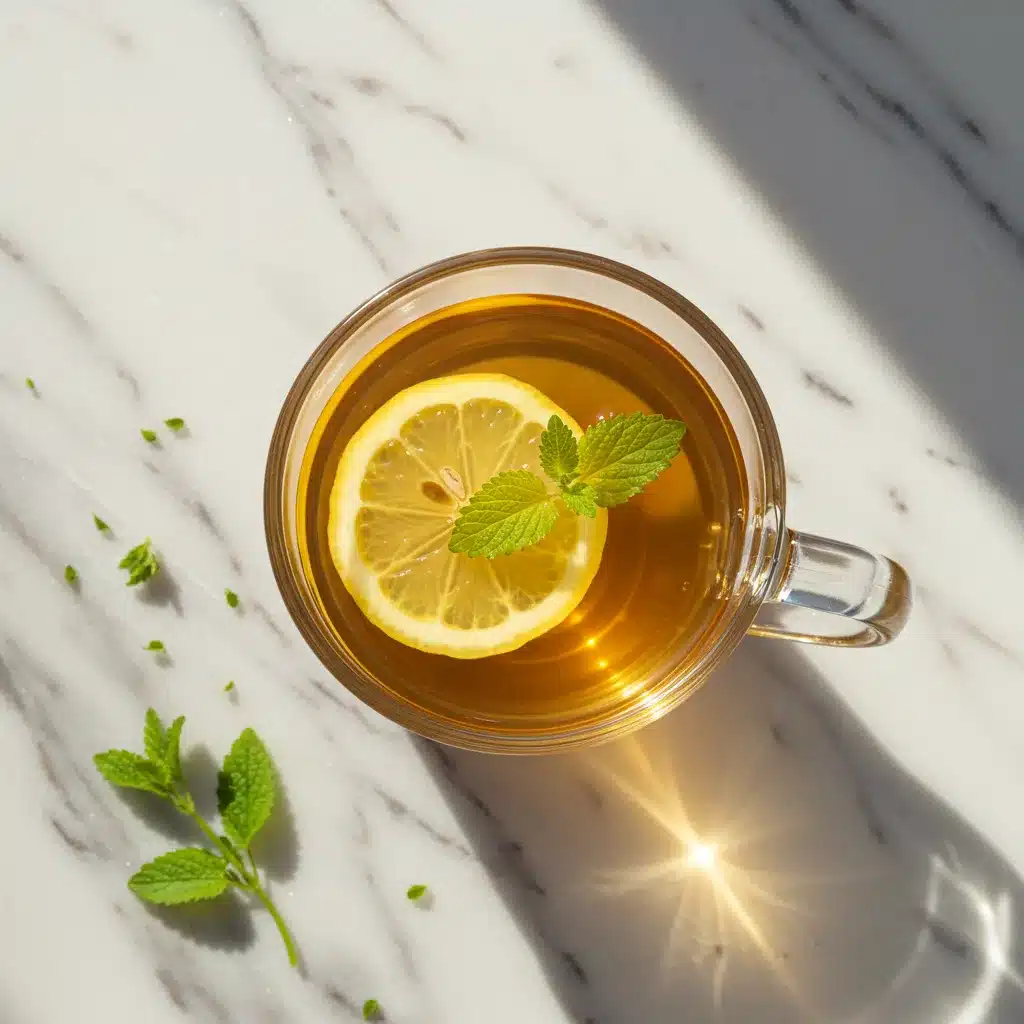
While this delightful tea is a treat in itself, its benefits go far beyond flavor. It’s particularly celebrated for its potential to support weight management and overall well-being. Here’s how a simple recipe for lemon balm tea can become a cornerstone of your health routine.
1. Reduces Stress and Manages Cortisol
Stress is a major contributor to weight gain, especially around the midsection. When we’re stressed, our bodies release a hormone called cortisol, which can increase appetite and encourage fat storage. Lemon balm is a natural calming agent that helps lower stress and reduce cortisol levels. By promoting a sense of calm, this lemon balm tea weight loss recipe can help you manage stress-related eating and keep cravings in check.
2. Supports Healthy Digestion and Reduces Bloating
Poor digestion and bloating can leave you feeling sluggish and uncomfortable. Lemon balm is known to soothe the digestive tract, easing discomfort and reducing gas. By promoting better digestion, it helps your body absorb nutrients more efficiently and keeps things moving smoothly. A happy gut is essential for any successful and sustainable health plan.
3. Enhances Sleep Quality for Better Metabolism
A good night’s sleep is critical for weight loss. Poor sleep disrupts the hormones that regulate hunger (ghrelin and leptin), often leading to overeating and a preference for high-calorie foods. Lemon balm tea is a wonderful, caffeine-free beverage to enjoy before bed. It promotes relaxation and can help improve sleep quality, which in turn supports a healthy metabolism.
4. Rich in Antioxidants
Lemon balm is packed with antioxidants that protect your body from oxidative stress and inflammation. Chronic inflammation can interfere with metabolism and overall health. By fighting free radicals, the compounds in lemon balm help support your body’s natural fat-burning processes and strengthen your immune system.
How to Make Lemon Balm Tea for Weight Loss Recipe
Here it is—the simple, versatile, and delicious lemon balm tea recipe you’ve been waiting for. This recipe works perfectly with both fresh and dried leaves.
Ingredients
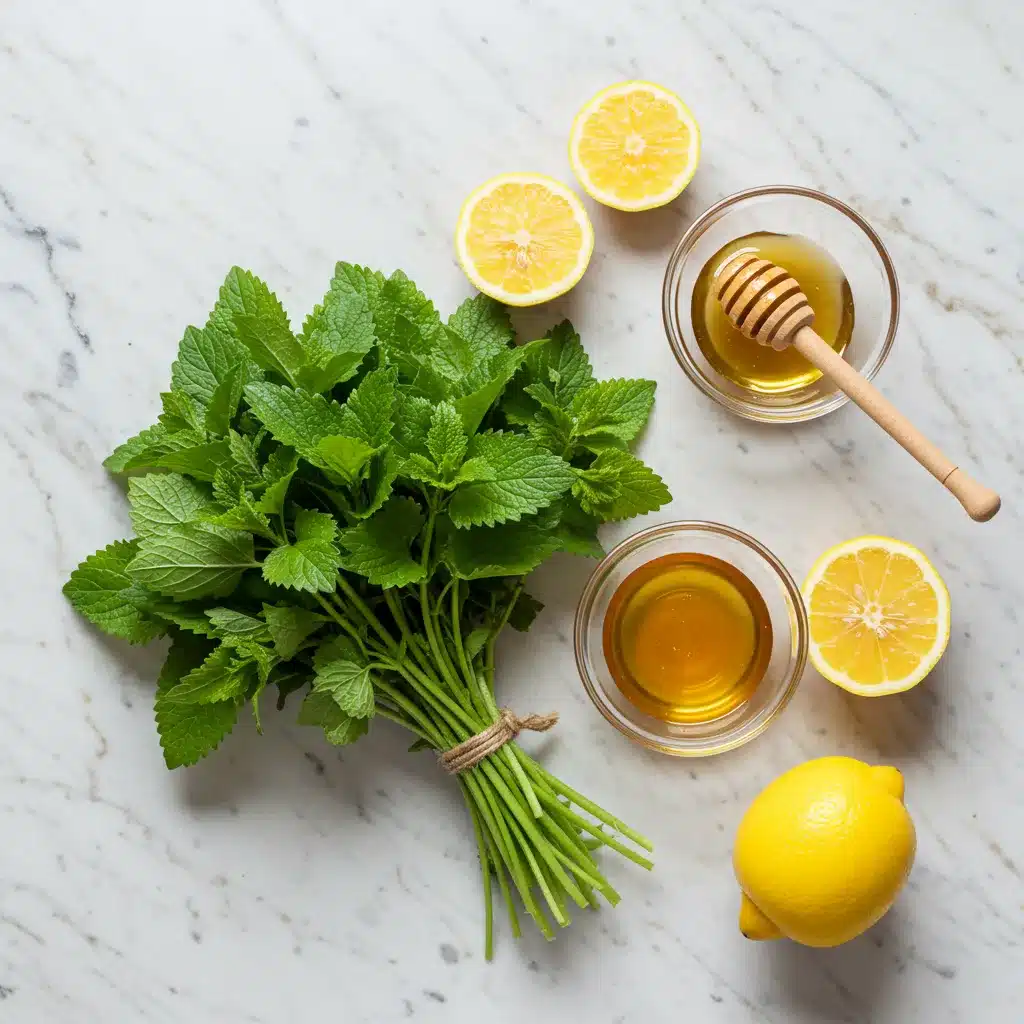
- 1 cup fresh lemon balm leaves (lightly packed), OR 2-3 tablespoons dried lemon balm leaves
- 4 cups (1 quart) of water
- 1-2 teaspoons of honey or maple syrup (optional, to taste)
- Slices of fresh lemon or ginger (optional, for variation)
- A few fresh mint leaves (optional, for variation)
Equipment
- A small pot or kettle
- A teapot or heatproof jar
- A fine-mesh strainer
Instructions
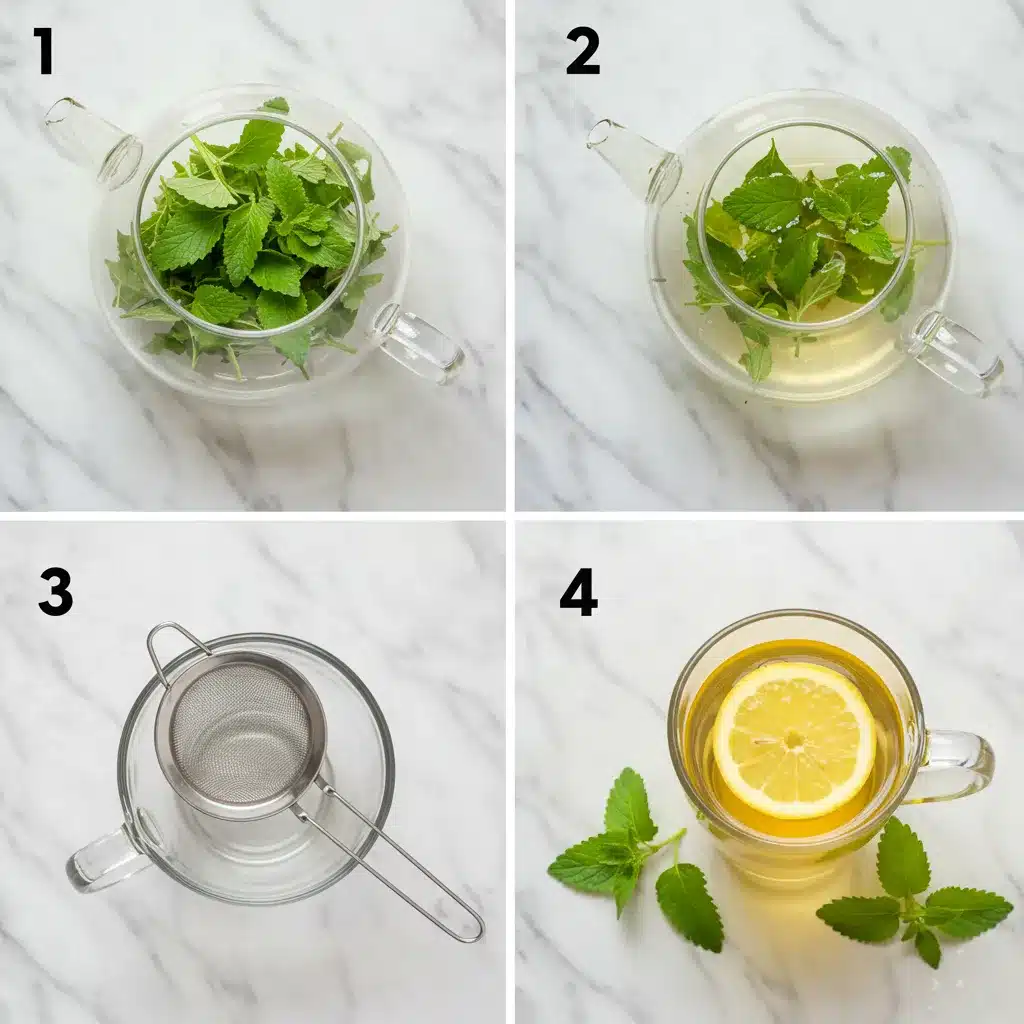
Step 1: Prepare the Lemon Balm
If using fresh lemon balm, give the leaves a gentle rinse under cool water to remove any dust or debris. You can lightly crush the leaves with your hands to help release their natural oils and wonderful aroma.
Step 2: Boil the Water
In a small pot or kettle, bring 4 cups of water to a boil. For herbal teas like lemon balm, using fully boiled water helps extract the maximum flavor and benefits.
Step 3: Steep the Tea
Place your fresh or dried lemon balm leaves into a teapot. Pour the boiling water over the leaves. Give it a gentle stir, cover the pot, and let it steep for 10-15 minutes. The longer it steeps, the stronger and more flavorful your tea will become.
Step 4: Strain and Serve
Strain the tea through a fine-mesh sieve into your favorite mugs. If you’re using a sweetener like honey, stir it in now while the tea is warm. Garnish with a fresh slice of lemon and enjoy!
Recipe Variations
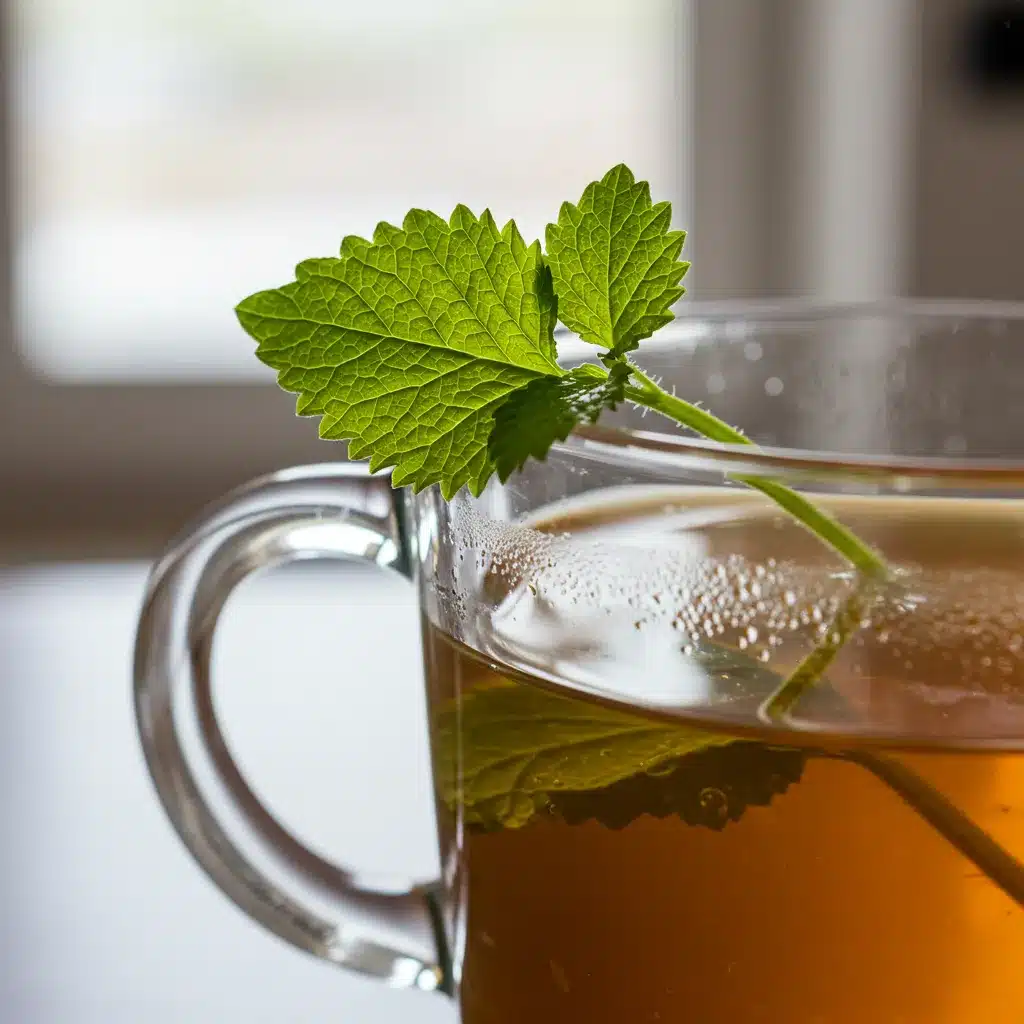
- Lemon Balm Iced Tea Recipe: Prepare the tea as instructed and let it cool completely. Refrigerate for at least an hour, then serve over ice with a lemon wedge for a refreshing summer drink. This is a great alternative to sugary iced teas. Check out our Apple Cider Vinegar Drink for Weight Loss Recipe for another healthy cold beverage.
- Lemon, Ginger & Mint Blend: Add a few slices of fresh ginger or a handful of mint leaves along with the lemon balm during the steeping process. This adds a zesty, invigorating kick and enhances the digestive benefits.
- Calming Lavender Blend: For an extra-relaxing bedtime tea, add a teaspoon of dried culinary lavender to the steep.
Tips for the Perfect Cup
- Fresh vs. Dried: Fresh leaves offer a bright, vibrant flavor, while dried leaves provide a more concentrated, earthy taste. Both are excellent choices for this recipe lemon balm tea.
- Where to Get Lemon Balm: You can grow it in your garden, buy fresh bunches at a farmer’s market, or purchase high-quality dried lemon balm online or from health food stores.
- Storage: Store fresh lemon balm in the refrigerator, wrapped in a damp paper towel inside a plastic bag, for up to a week. Keep dried lemon balm in an airtight container in a cool, dark pantry for up to a year.
- Consistency is Key: To reap the full benefits, try to incorporate this tea into your daily routine. A warm cup in the morning can kickstart your metabolism, while an evening cup can help you unwind. For other healthy routine ideas, see our Green Juice Recipe for Weight Loss.
Related Recipes You’ll Love
- Pink Salt Weight Loss Recipe
- Coffee Loophole Recipe for Weight Loss
- Natural Brazilian Mounjaro Recipe
- Bariatric Seed Recipe for Weight Loss
Frequently Asked Questions (FAQs)
How often should I drink lemon balm tea for weight loss?
For best results, aim for 1-3 cups per day. Consistency is more important than quantity. Drinking a cup 20-30 minutes before a meal can also help promote feelings of fullness and aid digestion.
Can I use tea bags instead of loose leaves?
Absolutely! While loose leaves often provide a richer flavor, high-quality lemon balm tea bags are a convenient alternative. Follow the steeping instructions on the package, usually around 5-7 minutes.
Is this the best lemon balm tea recipe for sleep?
Yes, its calming properties make it an excellent choice for a bedtime beverage. Since it’s caffeine-free, it can help you relax and prepare for a restful night’s sleep without any grogginess the next day.
Can I make a large batch of this lemon balm tea?
Definitely! You can brew a larger batch and store it in a sealed container in the refrigerator for up to 3 days. Enjoy it chilled or gently reheat it on the stove (avoid the microwave, as it can affect the delicate flavors).
Are there any side effects to drinking lemon balm tea?
Lemon balm is generally considered safe for most people. However, if you are pregnant, nursing, have a thyroid condition, or are taking sedative medications, it’s always best to consult with your healthcare provider before adding a new herbal remedy to your routine.
Ready to Feel Amazing?
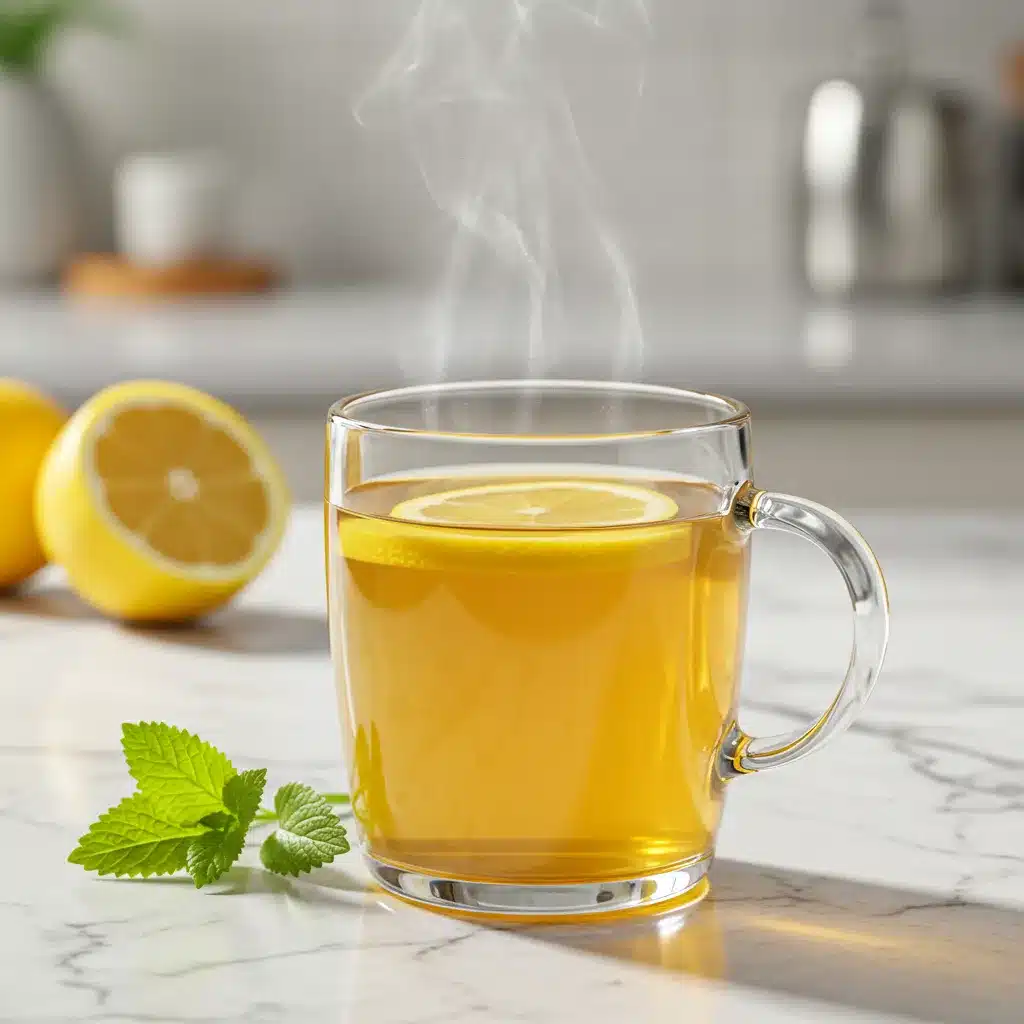
This simple lemon balm tea recipe is more than just a drink; it’s a small act of self-care that can bring calm, comfort, and balance to your busy life. It’s a gentle, natural tool to support your wellness goals and tastes absolutely wonderful.
Have you tried making lemon balm tea before? What are your favorite additions? Share your thoughts in the comments below! We’d love to hear from you. And don’t forget to follow us on Pinterest and Instagram for more delicious and healthy recipes!


